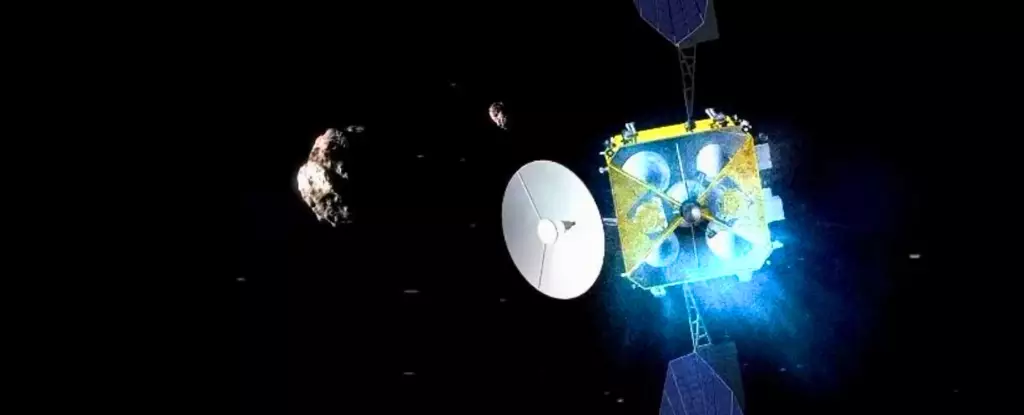On a momentous Thursday, China embarked on a groundbreaking journey to enhance humanity’s understanding of the cosmos by launching the Tianwen-2 space probe. This mission marks the nation’s inaugural attempt to retrieve samples from an asteroid, demonstrating China’s escalating ambition in space exploration. As reported by the Xinhua news agency, this undertaking is a pivotal part of President Xi Jinping’s “space dream,” a term that encapsulates China’s aspiration to become a major player in space.
The Tianwen-2 mission involves the probe journeying to asteroid 2016HO3, a celestial body that has captured the attention of scientists due to its potential to reveal secrets about the formation of our solar system. Just minutes post-launch, the Long March-3B rocket successfully deployed the probe into a transfer orbit, an event celebrated by the China National Space Administration (CNSA). The mission not only seeks to gather samples from the asteroid but also aims to explore the intriguing comet 311P, showcasing the depth and ambition of China’s space program.
The Investment in Space Exploration
China’s recent investments in its space program are nothing short of remarkable. The government has poured billions of dollars into various projects, with a clear focus on advancing technological capabilities and achieving remarkable milestones. The establishment of the Tiangong space station, which is colloquially referred to as the “celestial palace,” positions China as the third nation, following the United States and Russia, to send humans into orbit.
These investments have paid off in ways that go beyond mere technological development, fostering a sense of national pride while inspiring a new generation of scientists and engineers. The successful manned missions to Tiangong serve as a testament to China’s commitment to space exploration, with the recent Shenzhou-20 mission showcasing the capabilities of its astronauts during their six-month stay.
Scientific Significance of the Tianwen-2 Mission
The significance of the Tianwen-2 mission extends far beyond China’s borders. Asteroid 2016HO3 is a unique “living fossil,” comprising ancient materials from the early solar system. By analyzing samples collected from such an asteroid, researchers hope to gain insights into planetary formation and evolution processes that shaped the cosmos billions of years ago. This type of research can fundamentally alter our understanding of space and humanity’s place within it.
Moreover, studying comet 311P, a celestial body with features that blur the lines between asteroids and comets, adds another layer of excitement to this mission. By exploring its characteristics, scientists can probe into the transitional dynamics of celestial bodies. This could provide a clearer picture of the materials that were prevalent during the early stages of our solar system.
Challenges Ahead
Despite the exhilarating prospects of discovery, the Tianwen-2 mission is not without its challenges. The journey to asteroid 2016HO3 and back is expected to span around a decade, a timeline that presents significant risks and uncertainties in the realm of space travel. The CNSA has expressed optimism about the mission yielding groundbreaking results, yet the complexities of deep space missions require meticulous planning and profound resilience.
As the world eagerly watches this ambitious venture unfold, China’s multi-faceted approach to its space program highlights an exciting era of exploration that not only emphasizes national pride but also poses critical questions about our understanding of the universe and our responsibility toward it.

